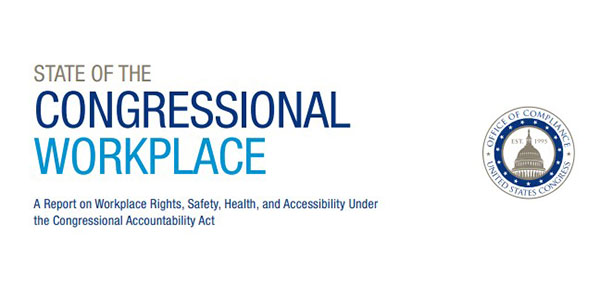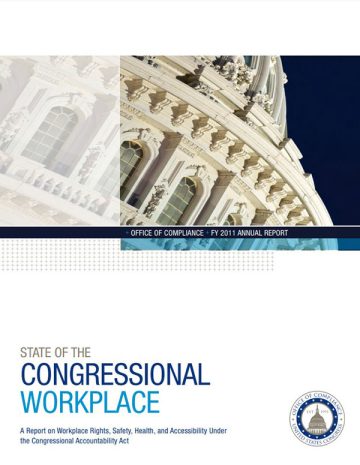THE CONGRESSIONAL WORKPLACE AND THE CONGRESSIONAL ACCOUNTABILITY ACT
The Congressional Accountability Act of 1995 (CAA) applies private sector and Executive Branch workplace rights, safety, health, and public access laws to Congress and its agencies and provides the legal process of resolving alleged violations of the CAA through the Office of Compliance (OOC). The CAA protects over 30,000 employees of the Legislative Branch nationwide (including state and district offices). Under certain circumstances, job applicants and former employees are protected. The CAA also provides protections and legal rights for members of the public who have disabilities and need access to public accommodations and services in the Legislative Branch.
STATEMENT FROM THE CHAIR OF THE BOARD OF DIRECTORS
We are pleased to share the “State of the Congressional Workplace,” our annual educational report to Congress, its agencies and employees, and the American people. We hope that the report allows you to better understand how workplace rights, safety, health, and accessibility laws have impacted Capitol Hill since the passage of the Congressional Accountability Act of 1995 (CAA). We seek to provide insight into the Office of Compliance’s (OOC) programs and related statistics, including data about the types of employment discrimination claims made by Congresionall staffers and how those claims are resolved. These statistics—which the CAA requires be disclosed annually to Congress—are an indicator of whether the CAA provides an effective venue for employees to address their workplace concerns.
Our statutory mandate also includes enforcement of the Occupational Safety and Health Act (OSHAct) and the Americans with Disabilities Act (ADA). In prior reports, we have noted a rapid improvement in Congressional compliance with the OSHAct requirements, largely precipitated by the OOC’s inspections of Congressional properties. Through our OSH inspections, we are able to locate safety hazards and provide necessary information to employing offices to allow those hazards to be removed. In this Annual Report, we draw attention to some of our ADA work for the first time, including details about access barriers for people with disabilities that the OOC found during inspections of the exterior pathways of House office buildings. By providing information to Congress and the Architect of the Capitol about the nature and location of the access barriers, and how to remove them, we hope to improve the safety of exterior pathways for people with disabilities.

